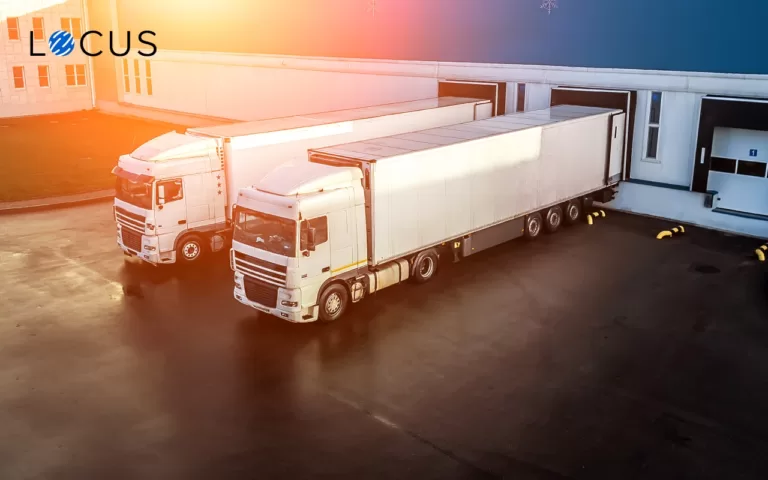Featured
How Locus Carries out Multi-Country Enagagements
Jun 30, 2021
7 mins read

Organizations are growing and expanding their business operations across the globe. With this evolving nature of business, the supply chain and logistics network needed to support these business operations have become more complex. In order to scale up and manage these globally fragmented logistics networks, many companies have started to use a universal cloud-based TMS system. These single TMS systems help organizations to understand business operations more accurately and also in a consistent manner.
Benefits of a Global TMS
There are some clear benefits that we have seen in a global TMS rollout for our multinational clients:
- Harmonization of process across the business units
- Increased operational efficiency and leveraging cross-region learnings
- Reduced implementation cost
- An unfragmented view of operations across the world offered by a common platform
- Corporate/ IT governance
While having a single TMS system across the business unit looks compelling, the rollout and deployment of these solutions at a global scale come with its own challenges. Organizations should recognize and address these challenges in an effective manner to ensure their successful implementation. The overall company profile needs to be accessed, which helps in understanding the existing frameworks, structure and organizational mindset for agreeing on critical aspects of the implementation. The risk associate and mitigation plan required for a globally diverse and homogeneous organization differ, and these need to be addressed beforehand.
Global engagement needs to define a compelling business case in order to support these massive undertakings. Business cases should be evaluated and monitored continuously, and should also include possible scenarios for changes during the course of implementation. Moreover, a high-level business case should determine which parts of a solution need to be globally standardized and which elements need to be tailored for a specific region. This helps in handling various local and statutory requirements.
As the rollout is across multiple countries, we should recognize the vast difference in cultures and languages across the system. Different strategies for training and support required during the course of implementation must be adopted post it too.
Addressing these challenges and how the various risks associated with them are mitigated is crucial for successfully deploying solutions. They can be approached in the following way:
- Identify a geography or region which can be used for testing business cases. The said country should have low risk in terms of implementation.
- Once the initial test geography is successfully rolled out, the next step is to club countries where similar strategies can be used and implement solutions. This will take engagement to the next level.
- Lastly, complete the full spectrum of the design template and focus on deployment in different countries.
When it comes to a cloud-based TMS solution, some additional factors must be considered:
- Avoiding features that are not part of standard cloud solutions.
- Having a clear view of various software upgrades being planned and incorporating them in the rollout plan.
- Having a training plan on a rolling basis to fit into the incremental product feature launch.
One has to consider various local aspects while deploying solutions across countries. Thus, a global as well a local rollout template that captures both sets of requirements becomes necessary. Both the vendor and the client must agree on these requirements.
Check Out: The Definitive Guide to Transport Management System
Implementation During Challenging Times
No one could have predicted a pandemic of this scale. Traveling to client locations for deployment has become next to impossible. Despite these challenges, we, at Locus, successfully deployed our TMS (Optimized routes + TrackIQ) solution for one of the largest FMCG organizations in multiple countries in the world.
The pandemic has impacted business dynamics which need to be taken into account when implementing a tech-heavy SaaS software.
In such a scenario, empathizing with different stakeholders involved in the value chain of the implementation is crucial as we can no longer meet them in person. Empathy will help you think from a stakeholder’s point of view—how will this software change their day, operational metrics, etc. Over the past year or so, we have successfully fulfilled various metrics relevant to the entire spectrum of business. Given the lack of personal connection, customers have come to expect immediate response and resolution.
Agility is key when it comes to implementing a platform that requires change management in day-to-day operations. Agility in turning around features quickly to meet the expectations helped us move forward and gain a foothold in these geographies.
With the outbreak of the pandemic, people have started to rely on virtual channels. We moved our engagement to online platforms too. This accelerated pace of digital adoption helped us to reach out to different stakeholders across geographies, understand their problem and provide resolution in an efficient manner.
From day one the implementation took place remotely. We had daily huddle meetings where the client and we discussed critical factors that needed to be resolved immediately. This helped us to maintain high efficiency without meeting in person.
Do’s for a Successful Global Deployment
- Role and Scope of the Implementation – Defining a clear scope and explicit role is a critical factor given the complexity and size of the implementation. The scope needs to be defined in multiple dimensions- the geographical area covered, business and legal entity that will be part of the implementation, systems that need to be integrated with the TMS and design flow for the same, the data that is required and where it resides, expected reporting and analytics from the solution as well as delivery of user training for the new solution.
- Global template v/s local template for requirement gathering – While requirements are getting discussed and finalized, the ‘template-based’ approach helps in defining which processes remain standard across geographies and which need some local customization. This templated requirement gathering gives you an understanding about the standardized process and technology design for integrated rollout. But more importantly, this exercise helps in turning some of the best local processes to a global process. Even though having global standardization of TMS systems makes sense in terms of efficiencies and cost for implementation, there may still be some regional requirements that can be challenging in terms of standardization.
- Overall governance model – A robust governance model is necessary for any implementation with this level of complexity. Governance models should include the general scope of implementation, roles and responsibilities of each individual involved, escalation structure, different phases of implementation, corresponding sign off and post-go-live support .
- Milestone-driven planning and scheduling – Overall deployment plan and schedule is created in detailed fashion. In this phase, each of these milestones are detailed down along with the associated activities. This is an iterative process and is updated based on the different variables we encounter during the implementation.
- Cloud upgrades and new feature release cycles – Cloud-based TMS solutions require more fine-tuned program management in terms of release management. Most upgrades will be released on rolling basis, and this requires having periodic training sessions in place. The project plan needs to incorporate these scheduled periodic training sessions.
- Change management – Work plan should be in place to handle varying cultural differences and languages across the multiple regions where the solution is being rolled out. The change management style and approach should be agreed upon by key stakeholders before its being rolled out. Every organization has a unique culture and change management needs to be tweaked accordingly.
- Data management – Data availability and cleaning of data can be key in defining the success or failure of any implementation. This can affect the overall timeline and so, organizations should undertake these activities during the initial phase itself to understand the risk involved.
Conclusion
Covid-19 quarantine and work from home has disbanded the on-site deployment team. Traditional on-site deployment teams have shifted to remote engagement teams in order to support essential manufacturing companies, distributors and last-mile delivery points to fulfill their logistics operations, thereby keeping the economy moving . With the lockdown and other travel advisories in place, Locus remote engagement teams are empowering clients across geographies to successfully deploy TMS solutions on ground with the help of advanced technology and methodologies.
Related Tags:

Featured
GoTo Merger – A Super App, Woke Consumers, and A Transforming SEA Economy
2019. That was the year when I first experienced the true power of wielding an app where I could hail a cab, order food or simply get parcels delivered anywhere in the city, all from a single interface. Although India had advanced reasonably well in the ride-hailing, food and b2c deliveries, and fintech industries individually […]
Read more
Last Mile Delivery Optimization
Impact of Mega Distribution Centers in Logistics
Black swan events like Covid-19 pandemic have forced the logistics industry to rethink and replan their warehouse strategies. Before this pandemic, companies managed their warehouse operations using the Just In Time (JIT) principle. It has shaken up the supply chain activities from Just-In-Time to Never on time. For a JIT warehouse management to be successful, […]
Read moreMOST POPULAR
EDITOR’S PICKS
SUBSCRIBE TO OUR NEWSLETTER
Stay up to date with the latest marketing, sales, and service tips and news



How Locus Carries out Multi-Country Enagagements